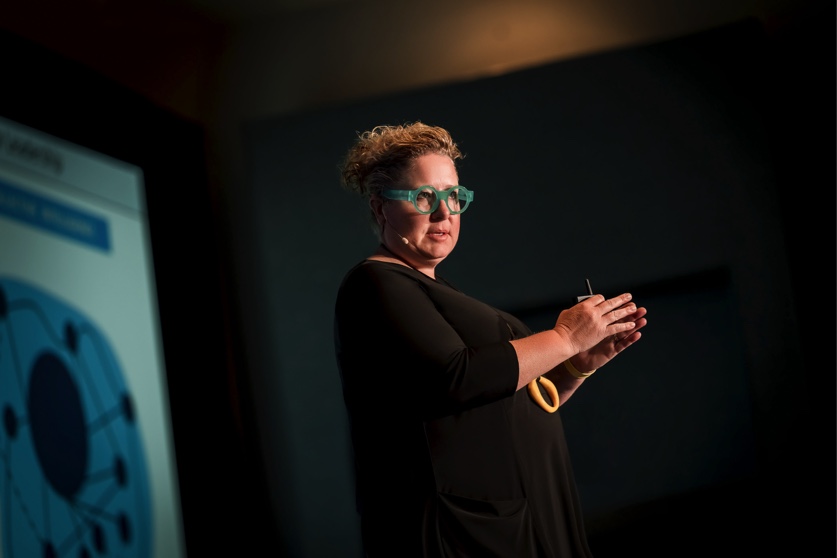Have you noticed that our rhetoric surrounding the epidemic is still concentrated on “going back” rather than “moving forward”? “During the pandemic, many people felt their lives had been thrown off course. So understandably, people desire to get back on track. However, much of the transformation during and after the pandemic has been positive. Might we think about it as “moving forward?”
Author Heather McGowan’s new book, The Empathy Advantage: Leading the Empowered Workforce, co-written with Chris Shipley, points out many of the ways we’ve changed for the good—moving forward—since the pandemic. But there is still a way to go.
During our conversation discussing the book, she highlighted some of the notable shifts forward that happened during the pandemic, including:
- We leapt forward five years in terms of progress and digital transformation in the first 60 days
- We doubled the speed at which we’re migrating to the cloud
- We effectively doubled the rate at which we’re handing off tasks to technology
Once Heather pointed out the “going back” language during our interview, I couldn’t help but notice that it is present in many conversations regarding the future of work. So many leaders are asking how to get things back to the way they once were rather than asking how to harness the change to achieve greater things. Insert almost any hot topic, be it generational differences in career priorities, gender norms, or attitudes toward how work fits into our lives. You’ll see as many people pushing back on the “return” language as you do pushing for “moving forward” change.
As Heather says, “You can’t put the toothpaste back into the tube now.”
Gender norms are something applicable to all organizations when it comes to the future of work. “It’s happening, and it’s happening to your employee base and your customers. When surveyed, Millennials and Gen Z say you shouldn’t have fixed, exclusionary gender markers in your language, in your restrooms, in your customer offerings.”
Heather McGowan
One of the undercurrents to much of the change we’ve seen has been the concept of purpose. As Heather rightly points out, a sense of purpose at work has become critically important to many people. “You’ll meet many Gen Zs whose attitude is essentially, ‘I’m going to work with a sense of purpose or not at all,'” she said.
She says that leaders should understand that employees want to feel like their work has a purpose and act in that way. Yet, if we look at Gallup’s research over the past 20 years, we can see the highest rates of disengagement, mental illness, burnout, and loneliness, which are not exactly traits that highlight being purpose-driven.
“It’s not like the old way was working, and now we’re suddenly loafing,” she joked. “Instead, I think we’re now putting work in the right place in our lives and getting the right social connections and support so we can do better work.”
For leaders seeking to help their employees find more purpose in their work, Heather suggests that structuring roles so employees are constantly learning is a great place to start. Allowing employees to upskill, reskill, and develop can help give employees a greater sense of
belonging and purpose.
Heather suggests three considerations for leaders.
The first comes from a design consulting firm with the idea of three jobs “homes.” For example, one of those homes would be your primary function as a designer or engineer. The second home would be the goal of your current project, a temporary goal of sorts until the project ends. The third home would be your research area. Heather offered some context: “Let’s say I’m scanning the horizon, and I might see the need to understand Chat GPT or generative design. And so, I bring that research back into the project as well as back into my functional home.”
The second idea borrows from LinkedIn founder Reid Hoffman’s suggestion of framing work as “tours of duty.” This allows both parties to enter the relationship with mutual expectations on why they’re coming together and what they’ll learn and achieve together. Then, they’ll separate and go on other adventures and additional tours of duty.
The third idea pays homage to job sculpting. This theory suggests that everything we do in the knowledge economy is based upon eight deeply embedded life interests. As a result, people are naturally more engaged in roles and tasks that match their life interests. Heather suggests that in this approach, roles may look more like consultants working on projects. Employees will play different roles in the project based on their function and then move on to new projects or sit on the bench while other functions complete their part of the project.
Leaders must acknowledge our level of burnout in society while aiming to sort out how to permit people to take breaks when needed. She believes society will prosper when we embrace people who put their life before work because we all do better work when we are happier humans.
The Empathy Advantage
WILEY
“As a society, we’ve put work first, and it hasn’t helped work. We have not done better work when we put work first,” she pointed out.
She believes that humans are the most important asset in every organization, not because they are an actual asset but because human ingenuity drives value creation. Ultimately, Heather would like to see leaders treat their humans far better instead of grinding them into the ground to optimize performance.
The Empathy Advantage: Leading the Empowered Workforce is chock full of helpful suggestions to bring empathy to the fore, in addition to including over 75 valuable diagrams.
Watch the full interview with Heather McGowan and Dan Pontefract on the Leadership NOW program below, or listen to it on your favorite podcast.









